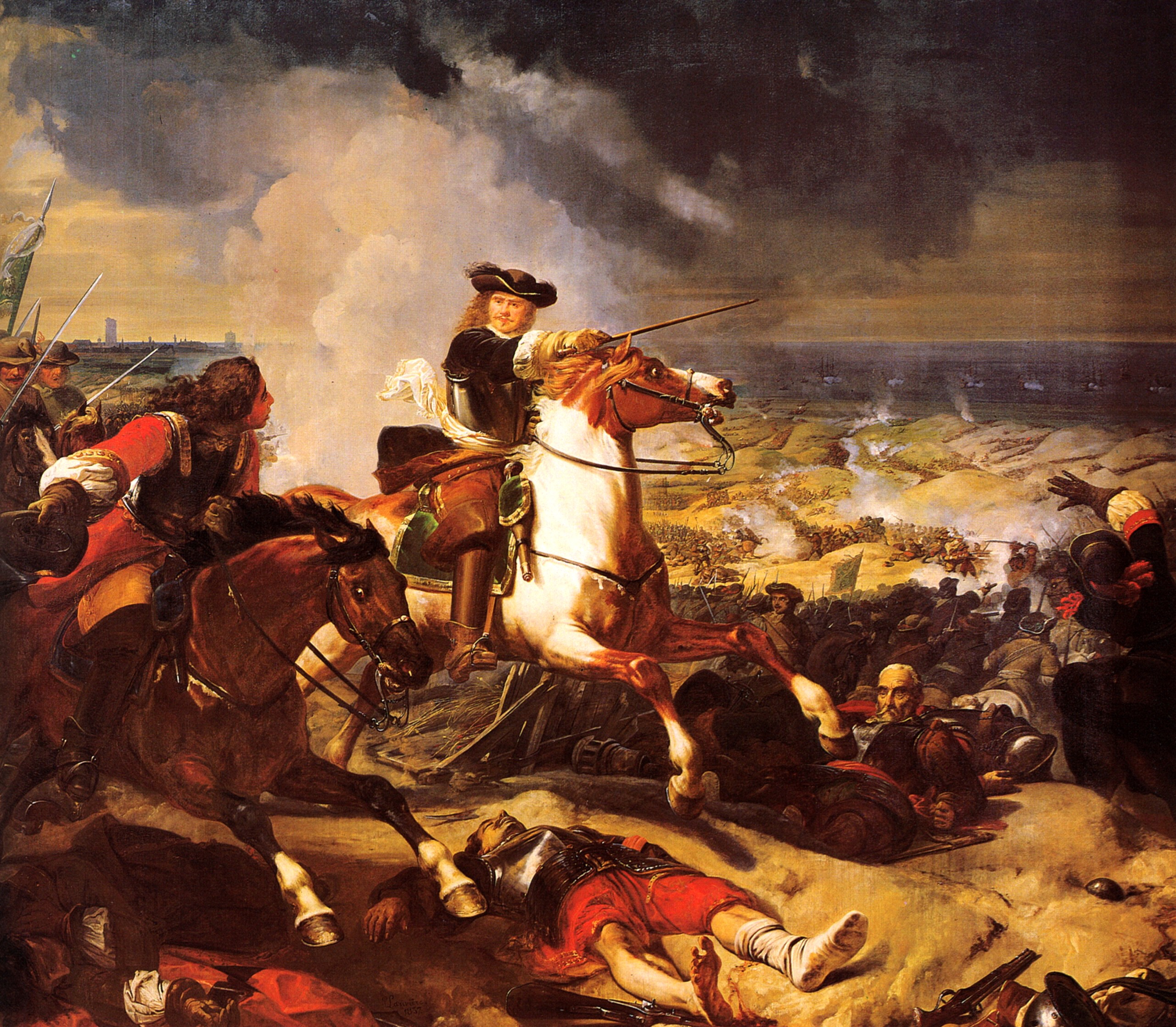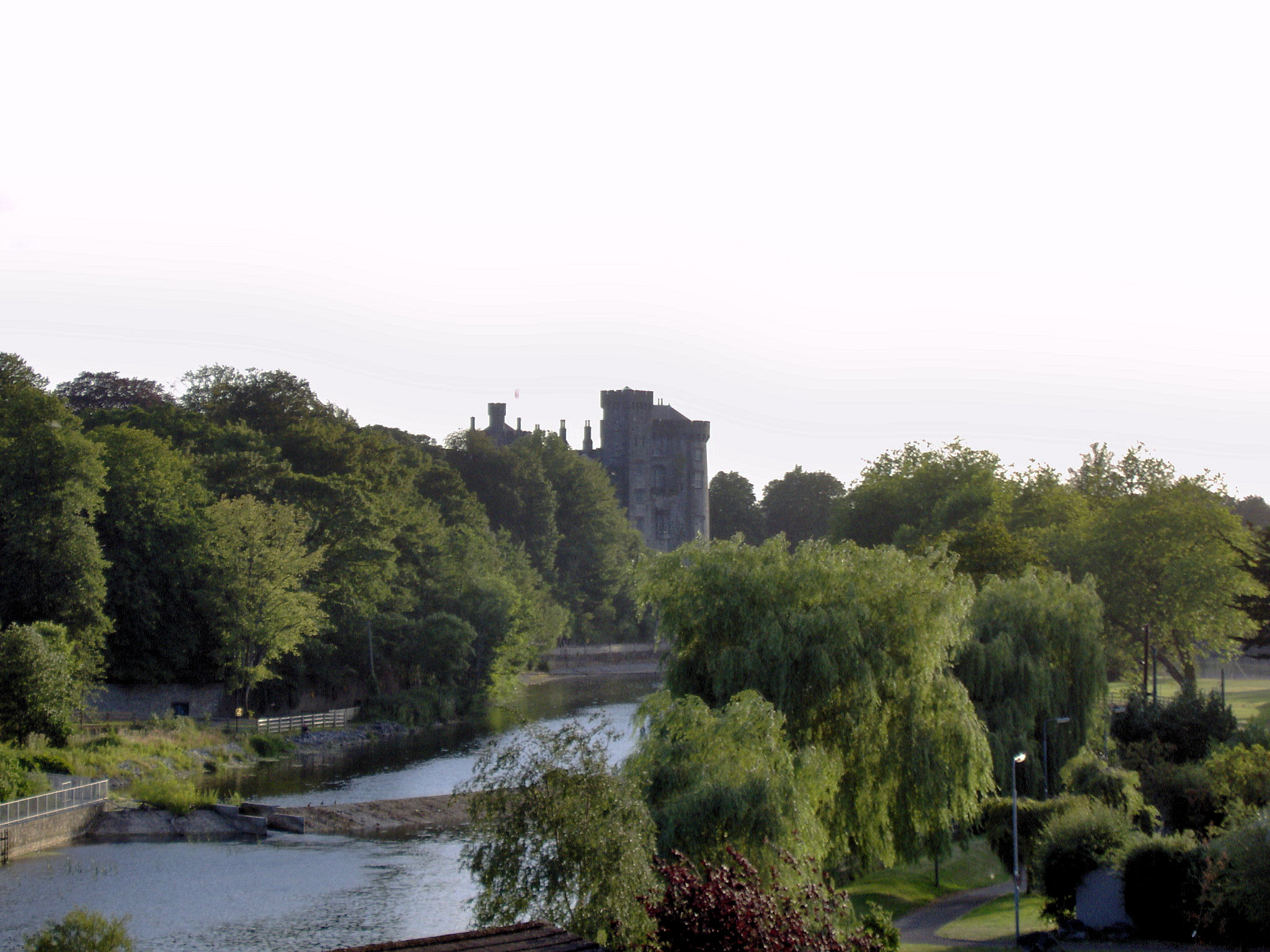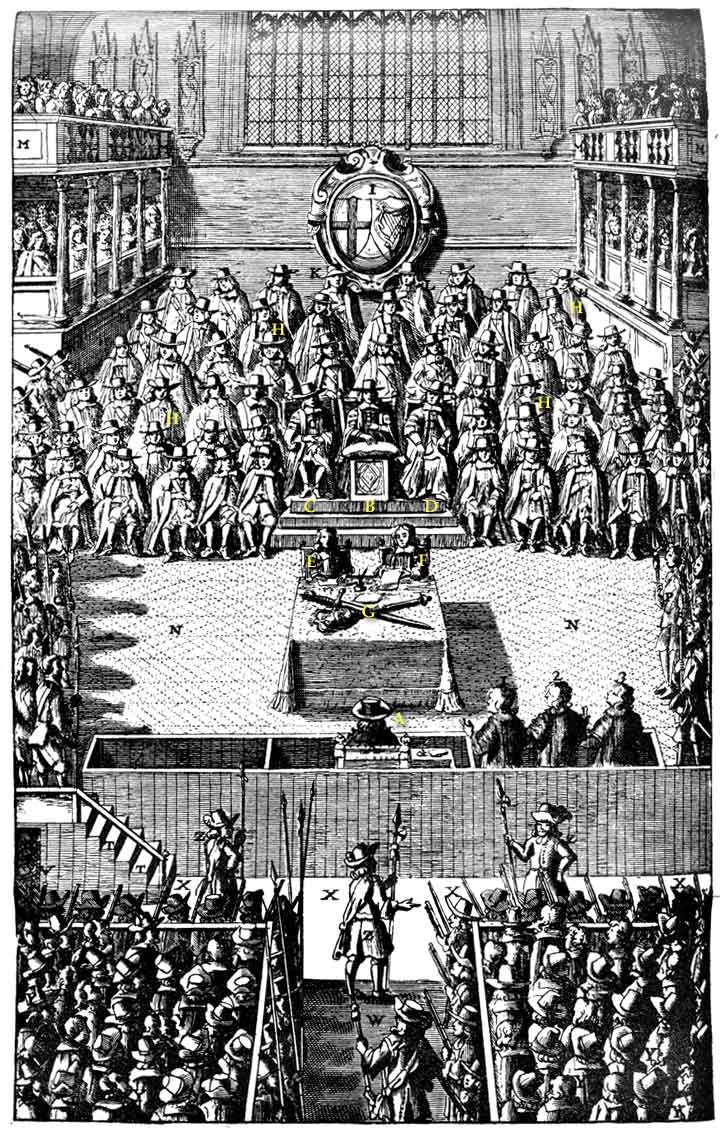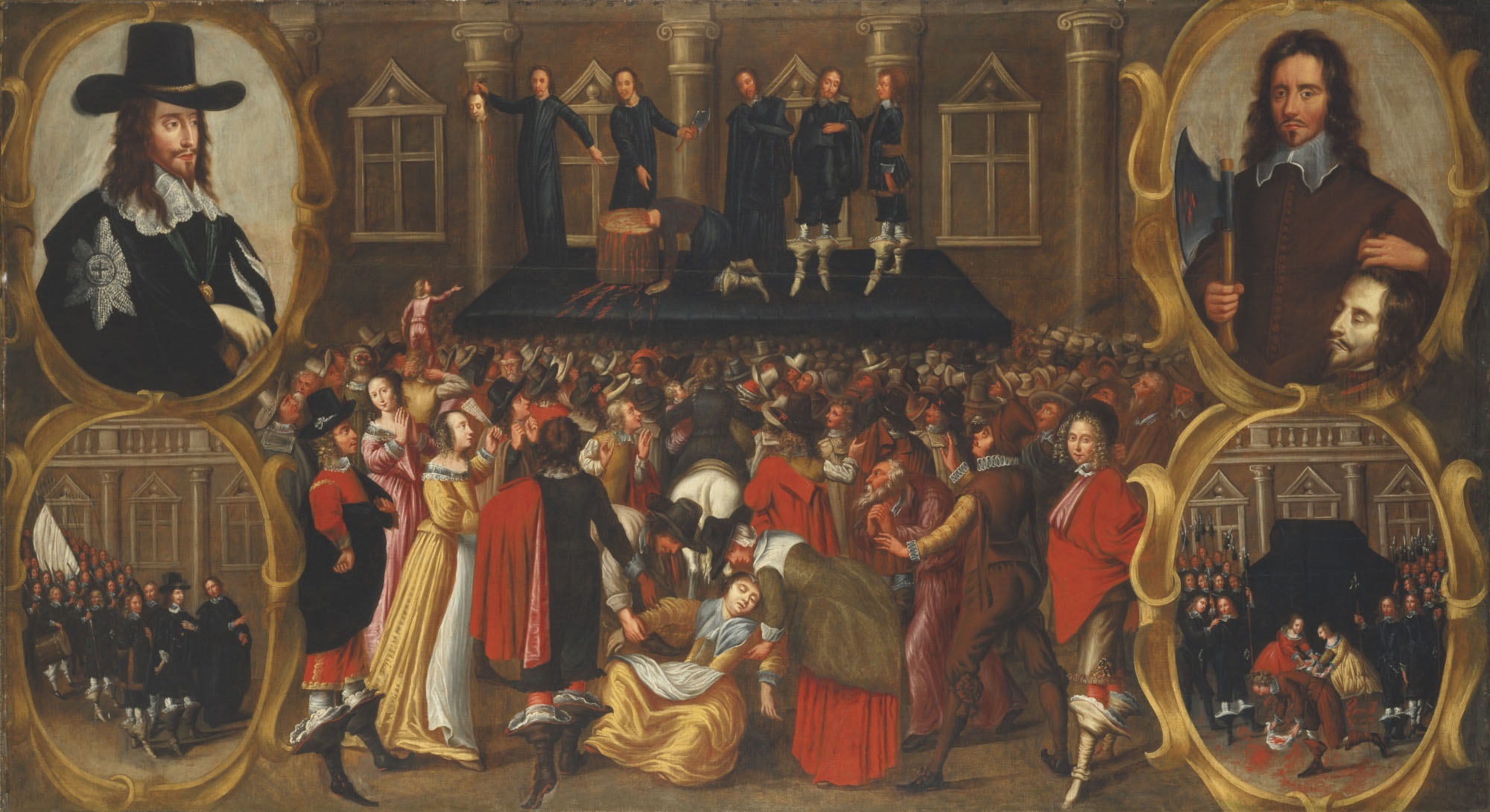|
Thomas Hammond (regicide)
Thomas Hammond (c. 1600–1658), was an officer in the New Model Army and a regicide. Family life Hammond was the third son of the five children of Dr John Hammond (c. 1555–1617), physician to the royal household under James I, who purchased the site of Chertsey Abbey in Surrey in 1602. His brother was the cleric, Henry Hammond. He married Susan Temple (daughter of John Temple of Frankton) in 1635. Civil War In 1642, at the start of the English Civil War he was commissioned as an artillery officer. As he was an experienced officer he must have seen military service in the continental wars that preceded the Civil War although there is no direct evidence of this. His motives for joining the Parliamentary side against King Charles I are not recorded but his radicalism was evident by 1644 when he testified against his own commander-in-chief, Edward Montagu in favour of Oliver Cromwell. Between 1647 and 1649 he was active member of small committee that represented the interests o ... [...More Info...] [...Related Items...] OR: [Wikipedia] [Google] [Baidu] |
New Model Army
The New Model Army was a standing army formed in 1645 by the Parliamentarians during the First English Civil War, then disbanded after the Stuart Restoration in 1660. It differed from other armies employed in the 1639 to 1653 Wars of the Three Kingdoms in that members were liable for service anywhere in the country, rather than being limited to a single area or garrison. To establish a professional officer corps, the army's leaders were prohibited from having seats in either the House of Lords or House of Commons. This was to encourage their separation from the political or religious factions among the Parliamentarians. The New Model Army was raised partly from among veteran soldiers who already had deeply held Puritan religious beliefs, and partly from conscripts who brought with them many commonly held beliefs about religion or society. Many of its common soldiers therefore held dissenting or radical views unique among English armies. Although the Army's senior officers ... [...More Info...] [...Related Items...] OR: [Wikipedia] [Google] [Baidu] |
Levellers
The Levellers were a political movement active during the Wars of the Three Kingdoms who were committed to popular sovereignty, extended suffrage, equality before the law and religious tolerance. The hallmark of Leveller thought was its populism, as shown by its emphasis on equal natural rights, and their practice of reaching the public through pamphlets, petitions and vocal appeals to the crowd. The Levellers came to prominence at the end of the First English Civil War (1642–1646) and were most influential before the start of the Second Civil War (1648–49). Leveller views and support were found in the populace of the City of London and in some regiments in the New Model Army. Their ideas were presented in their manifesto "Agreement of the People". In contrast to the Diggers, the Levellers opposed common ownership, except in cases of mutual agreement of the property owners. They were organised at the national level, with offices in a number of London inns and taverns su ... [...More Info...] [...Related Items...] OR: [Wikipedia] [Google] [Baidu] |
1658 Deaths
Events January–March * January 13 – Edward Sexby, who had plotted against Oliver Cromwell, dies in the Tower of London. * January 30 – The " March Across the Belts" (''Tåget över Bält''), Sweden's use of winter weather to send troops across the waters of the Danish straits at a time when winter has turned them to ice, begins. Within 17 days, Sweden's King Karl X Gustav leads troops across the ice belts to capture six of Denmark's islands as Swedish territory. * February 5 – Prince Muhi al-Din Muhammad, one of the sons of India's Mughal, Emperor Shah Jahan, proclaims himself Emperor after Jahan names Muhi's older brother, Dara Shikoh, as regent, and departs from Aurangabad with troops. * February 6 – Swedish troops of Charles X Gustav of Sweden cross The Great Belt in Denmark, over frozen sea. * March 8 (February 26 OS) – The peace between Sweden and Denmark is concluded in Roskilde by the Treaty of Roskilde, under which D ... [...More Info...] [...Related Items...] OR: [Wikipedia] [Google] [Baidu] |
1600s Births
Sixteen or 16 may refer to: * 16 (number), the natural number following 15 and preceding 17 *one of the years 16 BC, AD 16, 1916, 2016 Films * ''Pathinaaru'' or ''Sixteen'', a 2010 Tamil film * ''Sixteen'' (1943 film), a 1943 Argentine film directed by Carlos Hugo Christensen * ''Sixteen'' (2013 Indian film), a 2013 Hindi film * ''Sixteen'' (2013 British film), a 2013 British film by director Rob Brown Music *The Sixteen, an English choir *16 (band), a sludge metal band * Sixteen (Polish band), a Polish band Albums * ''16'' (Robin album), a 2014 album by Robin * 16 (Madhouse album), a 1987 album by Madhouse * ''Sixteen'' (album), a 1983 album by Stacy Lattisaw *''Sixteen'' , a 2005 album by Shook Ones * ''16'', a 2020 album by Wejdene Songs * "16" (Sneaky Sound System song), 2009 * "Sixteen" (Thomas Rhett song), 2017 * "Sixteen" (Ellie Goulding song), 2019 *"16", by Craig David from '' Following My Intuition'', 2016 *"16", by Green Day from ''39/Smooth'', 1990 *"16", ... [...More Info...] [...Related Items...] OR: [Wikipedia] [Google] [Baidu] |
Indemnity And Oblivion Act
The Indemnity and Oblivion Act 1660 was an Act of the Parliament of England (12 Cha. II c. 11), the long title of which is "An Act of Free and General Pardon, Indemnity, and Oblivion". This act was a general pardon for everyone who had committed crimes during the English Civil War and subsequent Commonwealth period, with the exception of certain crimes such as murder (without a licence granted by King or Parliament), piracy, buggery, rape and witchcraft, and people named in the act such as those involved in the regicide of Charles I. It also said that no action was to be taken against those involved at any later time, and that the Interregnum was to be legally forgotten.An act of free and general pardon, indemnity and oblivion History The Indemnity and Oblivion Act fulfilled the suggestion given in the Declaration of Breda that reprisals against the establishment which had developed during the English Interregnum would be restricted to those who had officiated in the regi ... [...More Info...] [...Related Items...] OR: [Wikipedia] [Google] [Baidu] |
Restoration (England)
The Restoration of the Stuart monarchy in the kingdoms of England, Scotland and Ireland took place in 1660 when King Charles II returned from exile in continental Europe. The preceding period of the Protectorate and the civil wars came to be known as the Interregnum (1649–1660). The term ''Restoration'' is also used to describe the period of several years after, in which a new political settlement was established. It is very often used to cover the whole reign of King Charles II (1660–1685) and often the brief reign of his younger brother King James II (1685–1688). In certain contexts it may be used to cover the whole period of the later Stuart monarchs as far as the death of Queen Anne and the accession of the Hanoverian King George I in 1714. For example, Restoration comedy typically encompasses works written as late as 1710. The Protectorate After Richard Cromwell, Lord Protector from 1658 to 1659, ceded power to the Rump Parliament, Charles Fleetwood and ... [...More Info...] [...Related Items...] OR: [Wikipedia] [Google] [Baidu] |
Third English Civil War
Third or 3rd may refer to: Numbers * 3rd, the ordinal form of the cardinal number 3 * , a fraction of one third * 1⁄60 of a ''second'', or 1⁄3600 of a ''minute'' Places * 3rd Street (other) * Third Avenue (other) * Highway 3 Music Music theory * Interval number of three in a musical interval **major third, a third spanning four semitones **minor third, a third encompassing three half steps, or semitones ** neutral third, wider than a minor third but narrower than a major third ** augmented third, an interval of five semitones ** diminished third, produced by narrowing a minor third by a chromatic semitone * Third (chord), chord member a third above the root * Degree (music), three away from tonic ** mediant, third degree of the diatonic scale **submediant, sixth degree of the diatonic scale – three steps below the tonic ** chromatic mediant, chromatic relationship by thirds *Ladder of thirds, similar to the circle of fifths Albums *'' Third/Sister L ... [...More Info...] [...Related Items...] OR: [Wikipedia] [Google] [Baidu] |
Cromwellian Conquest Of Ireland
The Cromwellian conquest of Ireland or Cromwellian war in Ireland (1649–1653) was the re-conquest of Ireland by the forces of the English Parliament, led by Oliver Cromwell, during the Wars of the Three Kingdoms. Cromwell invaded Ireland with the New Model Army on behalf of England's Rump Parliament in August 1649. Following the Irish Rebellion of 1641, most of Ireland came under the control of the Irish Catholic Confederation. In early 1649, the Confederates allied with the English Royalists, who had been defeated by the Parliamentarians in the English Civil War. By May 1652, Cromwell's Parliamentarian army had defeated the Confederate and Royalist coalition in Ireland and occupied the country, ending the Irish Confederate Wars (or Eleven Years' War). However, guerrilla warfare continued for a further year. Cromwell passed a series of Penal Laws against Roman Catholics (the vast majority of the population) and confiscated large amounts of their land. As punishment ... [...More Info...] [...Related Items...] OR: [Wikipedia] [Google] [Baidu] |
High Court Of Justice For The Trial Of Charles I
The High Court of Justice was the court established by the Rump Parliament to try Charles I, King of England, Scotland and Ireland. Even though this was an ''ad hoc'' tribunal that was specifically created for the purpose of trying the king, its name was eventually used by the government as a designation for subsequent courts. Background The English Civil War had been raging for nearly an entire decade. After the First English Civil War, the parliamentarians accepted the premise that the King, although wrong, had been able to justify his fight, and that he would still be entitled to limited powers as King under a new constitutional settlement. By provoking the Second English Civil War even while defeated and in captivity, Charles was held responsible for unjustifiable bloodshed. The secret "Engagement" treaty with the Scots was considered particularly unpardonable; "a more prodigious treason", said Oliver Cromwell, "than any that had been perfected before; because the former ... [...More Info...] [...Related Items...] OR: [Wikipedia] [Google] [Baidu] |
Long Parliament
The Long Parliament was an English Parliament which lasted from 1640 until 1660. It followed the fiasco of the Short Parliament, which had convened for only three weeks during the spring of 1640 after an 11-year parliamentary absence. In September 1640, King Charles I issued writs summoning a parliament to convene on 3 November 1640.This article uses the Julian calendar with the start of year adjusted to 1 January – for a more detailed explanation, see old style and new style dates: differences between the start of the year. He intended it to pass financial bills, a step made necessary by the costs of the Bishops' Wars in Scotland. The Long Parliament received its name from the fact that, by Act of Parliament, it stipulated it could be dissolved only with agreement of the members; and those members did not agree to its dissolution until 16 March 1660, after the English Civil War and near the close of the Interregnum.. The parliament sat from 1640 until 1648, when it was pu ... [...More Info...] [...Related Items...] OR: [Wikipedia] [Google] [Baidu] |
Regicide
Regicide is the purposeful killing of a monarch or sovereign of a polity and is often associated with the usurpation of power. A regicide can also be the person responsible for the killing. The word comes from the Latin roots of ''regis'' and ''cida'' (''cidium''), meaning "of monarch" and "killer" respectively. In the British tradition, it refers to the judicial execution of a king after a trial, reflecting the historical precedent of the trial and execution of Charles I of England. The concept of regicide has also been explored in media and the arts through pieces like ''Macbeth'' (Macbeth's killing of King Duncan) and '' The Lion King''. History In Western Christianity, regicide was far more common prior to 1200/1300. Sverre Bagge counts 20 cases of regicide between 1200 and 1800, which means that 6% of monarchs were killed by their subjects. He counts 94 cases of regicide between 600 and 1200, which means that 21.8% of monarchs were killed by their subjects. He a ... [...More Info...] [...Related Items...] OR: [Wikipedia] [Google] [Baidu] |
Grandee (New Model Army)
Grandee (; es, Grande de España, ) is an official aristocratic title conferred on some Spanish nobility. Holders of this dignity enjoyed similar privileges to those of the peerage of France during the , though in neither country did they have the significant constitutional political role the House of Lords gave to the Peerage of England and later Peerage of the United Kingdom. A "Grandee of Spain" would have nonetheless enjoyed greater "social" privileges than those of other similar European dignities. With the exception of Fernandina, all Spanish dukedoms are automatically attached to a Grandeeship yet only a few Marquessates, Countships, Viscountcies, Baronies and Lordships have the distinction. A single person can be a Grandee of Spain multiple times, as Grandeeships are attached, with the exception of a few cases, to a title and not an individual. Consequently, nobles in Spain with more than one title, most notably the current Duchess of Medinaceli and the Duke of ... [...More Info...] [...Related Items...] OR: [Wikipedia] [Google] [Baidu] |
_by_Robert_Walker_and_studio.jpg)







